Thesis: The North Korean threat to the United States and its allies from North Korea’s nuclear and ballistic missile development is growing rapidly. There are increased risks to the United States. The risks cannot be understated. The direct danger to the U.S. mainland is growing amid increasing concerns to America’s pacific allies. Resolution of the dangers is complex and involves difficult issues with China, North Korea and others.
U.S. policy (sanctions) has failed to stop North Korea’s development efforts, which are accelerating. American must adjust its policy, and soon. If unchecked, North Korea development of nuclearized intercontinental ballistic missiles that can reach the U.S. mainland is inevitable.
North Korea Readying New Missile Test
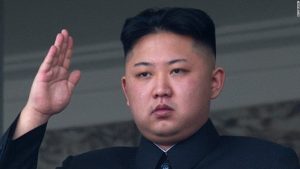
On January 3, 2016, North Korean leader Kim Jong Un announced his country is finalizing preparation for a test launch of an intercontinental ballistic missile. A successful launch would move Kim closer to holding a nuclear strike launch capability against the United States mainland, thereby increasing the North Korean threat.
Kim stated that North Korea will continue to focus on developing a preemptive nuclear strike capability. He reiterated that North Korea would continue its nuclear weapons program until the United States halts its annual military exercises in South Korea. No American president has been willing to accept this condition.
North Korea’s Nuclear and Ballistic Missile Programs Today
Doubts remain regarding the status of North Korea’s nuclear weapons program. For a recent timeline of the North Korean missile tests readers can go here.
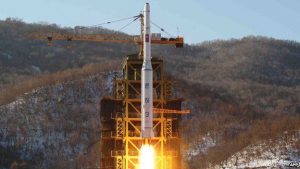
Skeptics questioned North Korean claims about a series of four nuclear tests that culminated with a test on January 6, 2016. Although North Korea claimed that the test was a hydrogen bomb (a thermonuclear device), the nuclear community was not convinced. The reported seismic magnitude was approximately 4.8. This blast is considered a small or moderately sized event. The estimated explosive yield was comparatively low, at six kilotons.
Speculation persisted that the test could have been a boosted fission device (a type of nuclear bomb that only uses a small amount of fuel to increase the yield of a fission reaction). No definitive proof about that test was developed.
Readers can go here to further explore technical aspects of boosted fission devices. But the important point regarding a boosted fission bomb is that it allows the North Koreans to more efficiently use its inventory of fissile material. In effect, they can spread their stockpile further while, at the same time, building lighter warheads. The lighter the warhead, the farther it can travel at a given level of thrust. Therefore, the January 6, 2016 test implied that North Korea is developing small and lightweight nuclear bombs. These bombs could fit on top of a ballistic missile and arguably travel far enough, when development is complete, to reach the United States mainland, create a direct North Korean threat to the U.S.
Ballistic Missile Program
The pace of North Korea’s ballistic missile program has also accelerated, and is now arguably as intense as its nuclear weapons development program. While there were over 25 launches in 2016, analysis of tests conducted in September confirmed several key improvements to their missile capabilities. The North Koreans seem to be focused both on enhancing range and an ability to avoid missile intercept.
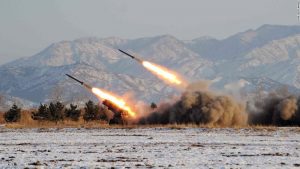
The September test indicated that they had succeeded in extending the distance that a short-range scud missile can travel. These missiles have a road-mobile launch capability. They are capable of being fueled in an undetectable way (in a tunnel, for example), allowing them to escape satellite detection that is otherwise possible with launchpads. Road-mobile missiles can be launched within minutes, reducing response time and thereby posing a greater first-strike threat.
Other aspects of the September missile test appeared to confirm that the North Koreans had improved missile elusiveness. For one, North Korea launched three missiles within one minute. Analysts believed this indicated an attempt to develop a capability to make it more difficult to intercept the North Korean launches. Jose Bermudez, the chief analytics officer at AllSource Analysis, concluded that:
This launch was probably designed to test not only operational readiness but to develop tricks to defeat antimissile defense in Japan and South Korea. When you launch in a barrage at the same time, it complicates missile defense. So they’ve shown they have not just the technological capability but the operational capability for simultaneous launches.
In addition, the tests exhibited a missile separation capability. Missiles with the ability to separate post-launch are, by definition, more difficult to intercept.
September 9, 2016 nUCLEAR Test
The North Koreans conducted their most recent test on September 9, 2016. A 5.3 magnitude earthquake was detected at their nuclear testing site. Analysts estimated the size of the blast was between 10 and 20 kilotons.
The September 9th test was the fifth known test conducted by North Korea and the second during 2016. The North Koreans made the following claim associated with the test:
The standardization of the nuclear warhead will enable the D.P.R.K. to produce at will as many as it wants a variety of smaller, lighter and diversified nuclear warheads of higher strike power with a firm hold on the technology for producing and using various fissile materials. This has definitely put on a higher level the D.P.R.K.’s technology of mounting nuclear warheads on ballistic rockets.
Analysis of North Korea’s Current Nuclear Capabilities
Siegfried Hecker, senior fellow and affiliated faculty member at Stanford’s Center for International Security and Cooperation published a detailed analysis of North Korea’s nuclear capability in light of this test. Hecker formerly served as a director of the Los Alamos National Laboratory from 1986 to 1997.
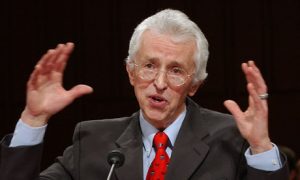
Hecker estimates that North Korea can produce roughly six bombs worth of highly enriched uranium per year. Their current stockpile is approximately 20 bombs. Thus, Hecker believes that North Korea can meet its production claims.
Hecker believes there are serious implications simply from the pace of nuclear weapons testing. The September, 2016 nuclear test:
must be viewed with great concern, not for any specific capabilities it may have demonstrated, but as part of this enormous buildup of North Korea’s nuclear arsenal. Five tests conducted over a ten-year period, sufficiently spaced that the test results can inform the next test, are deeply alarming.
U.S. Policy Failure: A Recent History
Professor Hecker believes that the United States’ policy shift in 2009 is directly responsible for the rising North Korean threat. He points out that under President W. Bush, Kim Jong Un’s father and predecessor, Kim Jong Il:
appeared sufficiently confident of the state’s security that he accepted the Bush administration’s change of heart and new willingness to find a diplomatic solution. The years 2007 and 2008 marked significant diplomatic progress, which resulted in . . . the return of international inspectors, and the presence of an American technical team.
A series of events, according to Hecker, slowed diplomatic progress, which stalled as the Bush administration left office. By early 2009 the North announced a long-range rocket test and then expelled the inspectors and the American team. After the North Koreans completed their second nuclear test in May, 2009, they approached the Obama administration to suggest a new round of discussions. But President Obama elected to pursue a policy of sanctions instead (labelled “Strategic Patience”). See our prior discussion here. Since then, North Korea’s ballistic missile and nuclear weapons programs have intensified and accelerated. The North Korean threat continues to grow.
North Korean Threat: Major Policy Concerns for the United States From an Unchecked North Korea
North Korean Threat to the United States. The United States faces a difficult dilemma that has several dimensions. The direct threat to the U.S. is clear – the North Koreans succeed in developing nuclear-tipped intercontinental ballistic missiles that can reach the American mainland. Unchecked, that is a real possibility within ten years or less.
Challenges for U.S. Allies. But the risks and concerns go well beyond a direct North Korean threat to the U.S. mainland. North Korea’s capabilities are/will be a direct and immediate threat to U.S. allies in the neighborhood — South Korea and Japan. The U.S. will have to successfully address those threats and maintain those alliances. This is no easy task, as South Korea is currently entangled in a political crisis. Japan may pursue its own missile defense and/or nuclear weapon development if the U.S. commitment is viewed as inadequate. The risk of nuclear proliferation in western Asia has increased.
Implications for U.S.-China Relationship. Beyond these challenges, and as we pointed out previously (See, “Senior Defector’s Take on North Korea’s Nuclear Intentions Has Major Implications for US China Policy, and North Korea Too,” the United States has failed to cause China to use its leverage over North Korea to halt the weapons programs. In fact, as we recently learned, China might never be willing to do so. Therefore, a U.S. policy incorporating reliance on China is seriously misplaced. If true, the inability to agree on an approach to North Korea will further bedevil what is likely to become a far more complicated U.S.-China relationship.
The Future of United States Policy: How to Deal With North Korea
Professor Keller concludes that “the latest nuclear test demonstrates conclusively that attempting to sanction [North Korea] into submission and waiting for China to exert leverage over Pyongyang’s nuclear program do not work.” Accordingly, continuing to focus on sanctions as the solution is bound to fail.
The Obama administration’s policy response has failed to halt North Korea. This response has primarily consisted of sanctions and regular exercises in South Korea to demonstrate military preparedness.
More recently, it included a joint announcement by the U.S. and South Korea to deploy a Terminal High-Altitude Area Defense (THAAD) missile battery in Korea. THAAD has the capability to intercept and destroy ballistic missiles either inside or outside the atmosphere during the final phase of flight. The system, if deployed, would improve missile defense in South Korea and would represent a continuation by the U.S. of its military preparedness policy.
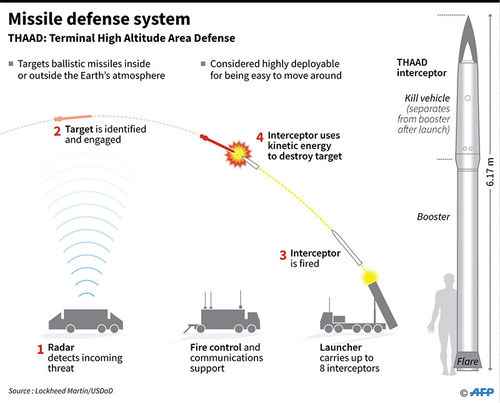
The THAAD announcement was met with loud protests and retaliations from China (which views a THAAD deployment in South Korea as provocative). The system includes radar that covers 4,000 kilometers. These radars are capable of monitoring Chinese operations in the Taiwan Strait and in the South China Sea. Some analysts see a THAAD deployment as likely to spur accelerated weapons development in North Korea. Similarly, there is a view that this may further promote China’s relationship with North Korea.
The THAAD system has not been deployed.
So what’s next for American policy? Wall Street Journal editors, for example, suggested that the U.S. respond to the next missile test by shooting the missile down. This would have the obvious dual benefit of denying North Korea test results and delaying North Korea’s progress. However, it would simply be an extension of the current military preparedness approach, albeit a directly provocative one. We believe that there is a reasonably high likelihood this would further entrench Kim Jong Un.
There may be few good policy options available to the United States to address the North Korean threat. Sanctions alone have failed to work. Negotiations alone failed to work. Perhaps a policy that combines elements of each is the lone path available. Diplomacy failed in other circumstances. However, in the current case an element of diplomacy may be a useful component of a new American approach. Perhaps Mr. Trump is the right voice to promote a new, combined approach.

